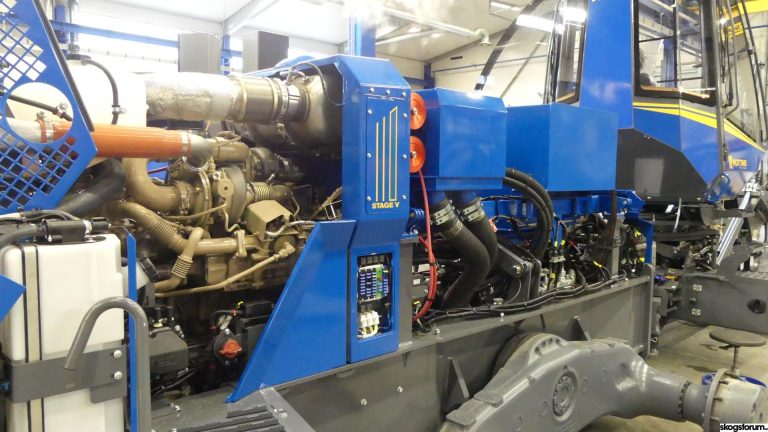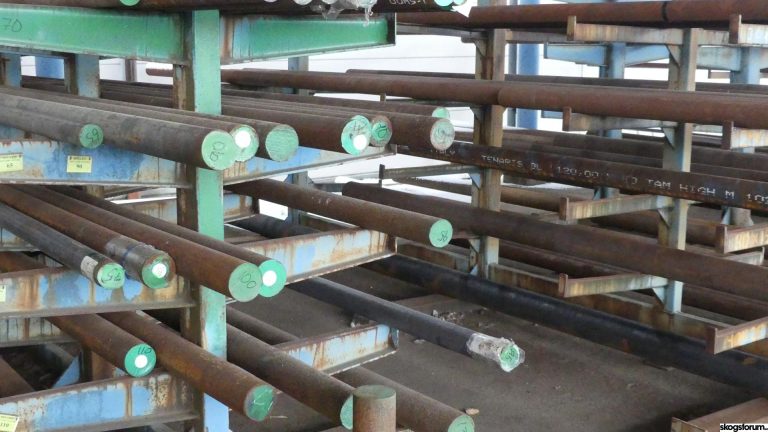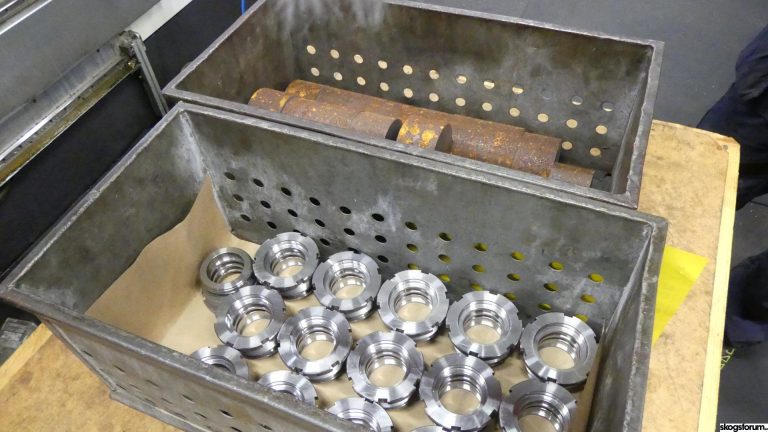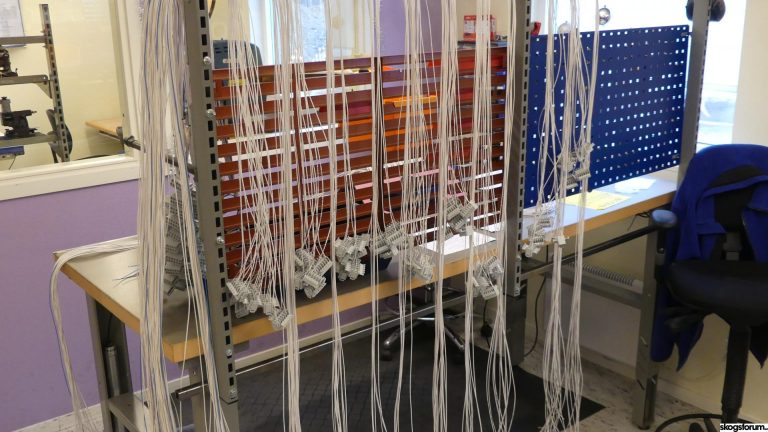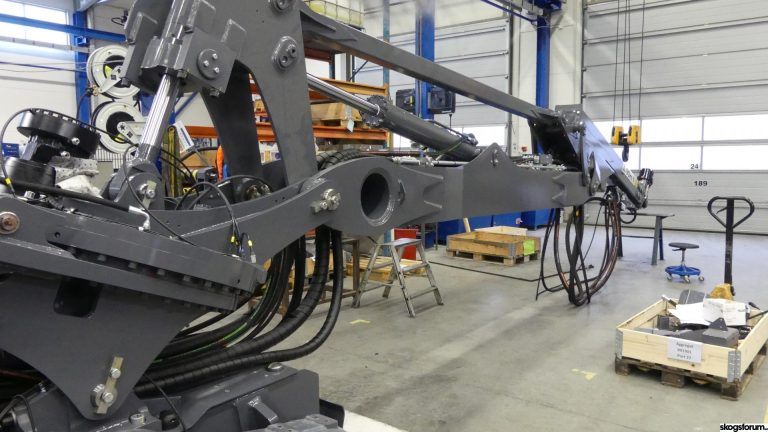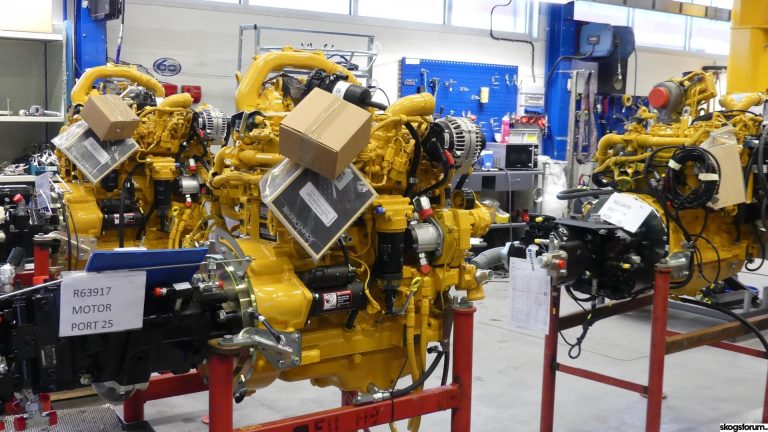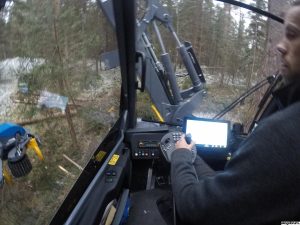Rottne Industri AB, the manufacturer of the Rottne machines, is in the town of Rottne in south Sweden. It´s a family-owned enterprise with 230 employees and they plan to deliver 200 forest machines during 2022. The aim is to reach 300 machines by 2026 or 2027. Torbjörn at the sister-site Skogsforum.se visited the Rottne factory in Rottne in December 2021*. Here are some of his impressions, and a film from his visit.
Rottne Industri AB
A company named after the town where it´s located is nothing new, at least not in Sweden. The most famous example is probably Husqvarna in the town of Huskvarna. Only the spelling differs, the pronunciation is the same. Jonsered is another example of a town that also is a brand.
Back to Rottne. Torbjörn had a chat with the CEO Tobias Johansson who talked about the company, how they coped with the corona pandemic and his view of the future for Rottne. He also got a tour at the factory and in the forest during testing. Each harvester is tested and set up in the forest before delivery to ensure that all details are in order.
Let´s start in the factory.
Rottne makes almost all parts themselves
Much of the machine components are made at Rottnes three factories. The company has two factories in south Sweden and one in the north. Up north, cranes and harvester heads are made. In the second factory in the south, welding of e.g., frames are made. In the main factory in Rottne, electronics and hydraulics are made, and the machines are assembled. Until recently Rottne Industri even made some of the hydraulic cylinders to the machines, but from now on those are purchased from a sub-supplier. The cabins and most of the sheet metal work is also made by sub-contractors.
The turnover of the company is approx. 50 million Euros. Of the 230 employees, 30 are working at the northern factory and the rest at the two in the south. At the main factory, large investments in production equipment are underway. Investments that will speed up the production rate to meet higher demands for machines.
Both Volvo Penta and John Deere engines
Rottne offers nine models in their range. Six forwarders with a payload from 10 to 20 metric tons, and three harvesters in different sizes. Different engines are offered depending on which market the machines are intended for. All machines to Russia have as for example Volvo Penta engines, and all other machines have John Deere engines.
The smallest harvester is the stand operating Rottne H8. A model size where Rottne has little competition. The only similar machine is the Sampo HR46 harvester. The largest harvester in the Rottne range is the H21, one of the World’s most powerful harvesters for clear cuts. The third harvester is the mid-sized Rottne H11, which could be used in thinning and clear cuts.
Soon 300 machines per year
In 2019, 190 Rottne machines were made, and the target was to break the 200-wall in 2020. However, the pandemic put a stop to this ambition but in 2021 it turned. In 2022, Rottne is counting on that over 200 machines will leave the factory. By 2026-2027, the plan is that 300 machines should be produced. According to Rottne, such an expansion is possible in the current market. Today, the order books are full and delivery times are long. So, the production rate must increase.
CTL (Cut-To-Length) increases
“Sales is good on many markets today,” Tobias Johansson explains. “Not least in North America where our sales have quadrupled during 2021 and are still growing.”
Rottne Industri has a sales subsidiary in Canada and has had a good reputation in this market for a long time.
“We even sell Rottne H8 in Canada nowadays,” says Tobias.
Approximately half of the production is exported. Apart from North America, Germany, Norway, the Czech Republic, and France are large export countries for Rottne.
Rottne H8D – a small harvester with a large market
The sales growth has been especially good for the smallest and the largest harvester. The trend seems to be moving toward more specialized machines for different purposes instead of all-around machines like the H11.
The Rottne H8 has its roots in the Rottne 2000 that was launched in 1991. After the 2002- and the 2004 models, the first H8 was launched in spring 2004. The concept stand operating harvesters is still attractive even if the H8 is both larger and heavier than the early 2000-models. Up to December 2021, 420 Rottne H8 has been manufactured.
Testing in the forest
As mentioned above all harvesters are tested in the forest before delivery. Settings are finetuned and details are checked. When the machine reaches the customer, everything shall be set to just start working.
In the film below you will see such a test of a Rottne H8 done by the test pilot Gunnar.
*This means that the interviews on which this article is based took place before the war in Ukraine.
Film and photos: Torbjörn Johnsen






